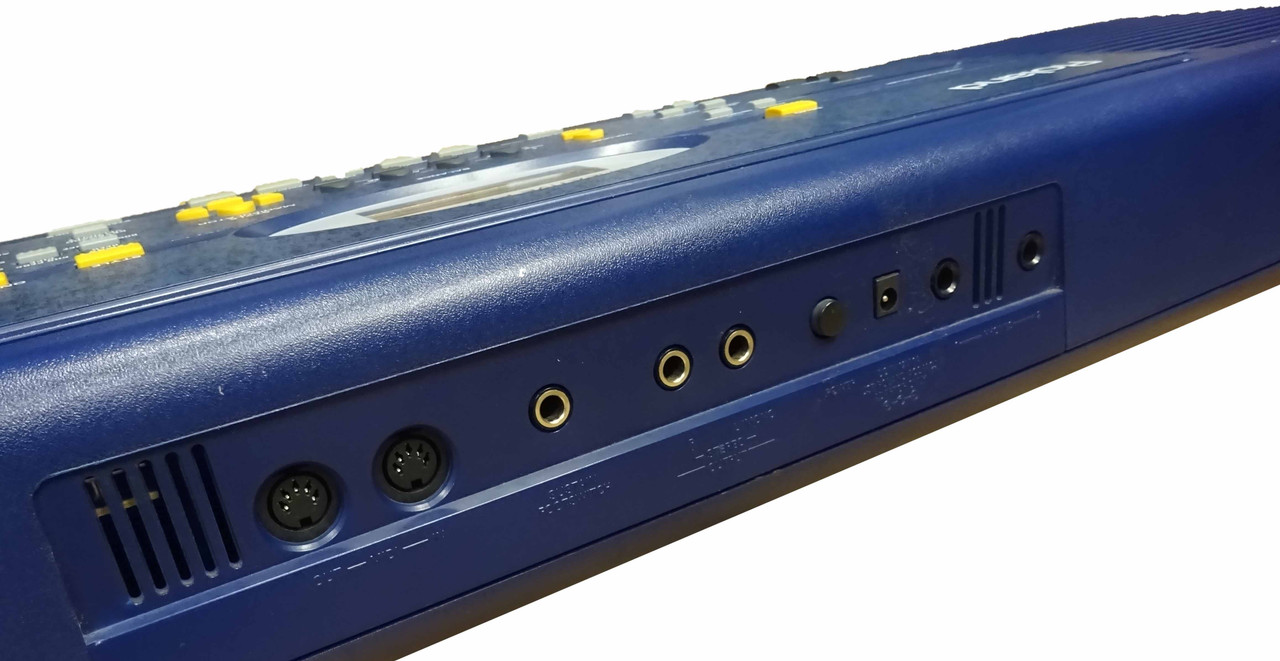Product Description
Roland EM-20 Creative Keyboard
About This Keyboard
This keyboard came to us in trade and is in excellent condition. For a keyboard in this price range it sounds amazing. The built-in speakers sound great, all of the keys play and there are no broken ones. It does not include a power adapter but all of the manuals can be downloaded from the rolandus.com website in .pdf format. Cosmetically it is excellent with just a couple of scuffs and scratches here and there. The display screen is bright and clear. Anyone could have a lot of fun with this keyboard.
Described by Roland as an "Intelligent Synthesizer," the instrument was the first product of Roland Europe SpA, which had been set up after a takeover of the SIEL company of Italy the previous year. The new venture was a strategic move by Roland to enter the lucrative high-end home keyboard market which had hitherto been dominated by Yamaha and Technics.
Featuring auto accompaniment, and built in speakers the E-20 used the advanced Linear Arithmetic or "LA" synthesis system as used on the Roland MT-32 sound module. The E-20 set a new standard for the amateur keyboardist, with high-quality sounds, innovative drum patterns and backings which were widely recognised as being significantly more advanced than both Yamaha's PSR and Technics's KN instruments.
As well as the E-20 itself, the cheaper E-5 and E-10 were subsequently launched as "cut down" versions, while the enhanced E-30 debuted in 1990. There was also a modular version (the RA-50 Realtime Arranger), and the Pro-E Intelligent Arranger, which was basically half of an E-20, excluding the built-in speakers but including the so-called "intelligent arranger" and drum unit.
In 1989 the German company Quasimidi produced a popular retrofit upgrade kit that significantly expanded the capabilities of the E-20 stock keyboard. It doubled the number of sounds available from 64 to 128 by unlocking hidden patches previously only available via MIDI. It also doubled the number of user programs that could be stored and enabled the layering of two sounds in the right hand section. Another feature was the removal of the system exclusive control on the automatic accompaniment, allowing this to be controlled by other non-Roland keyboards.
Roland would go on to dominate the home keyboard market in the 1990s with subsequent generations of the E-series line, introducing other firsts – for example the second generation models (the E-15, E-35 and E-70) were among the first Roland keyboard instruments to feature the Roland GS-standard, having been launched at the same time as the legendary Roland SC-55 Sound Canvas module.
Roland would later introduce the closely related professional G-series line (the G-800, G-1000 and later, the G-70) as what were to become known as "arranger" keyboards began to gain acceptance and recognition within the professional user community. However, all of these products retain the same basic architecture of the E-20.
It is important to remember that when buying a used keyboard it may not operate or look exactly like a new one. Used keyboards develop wear over time that can cause such items as function buttons, knobs, sliders etc. to fail to operate as smoothly or easily as when they were new. Our technician does check these items and if they are deemed unusable they are replaced but some function buttons may require more pressure or manipulation to make the appropriate changes. Cosmetically your used keyboard may have scuffs, scratches, cracks to plastic pieces, discolored keys or other visual impairments that might not show up in the photos. We try to mention any obvious visual imperfections but may not consider them serious enough to post in the listing.


















